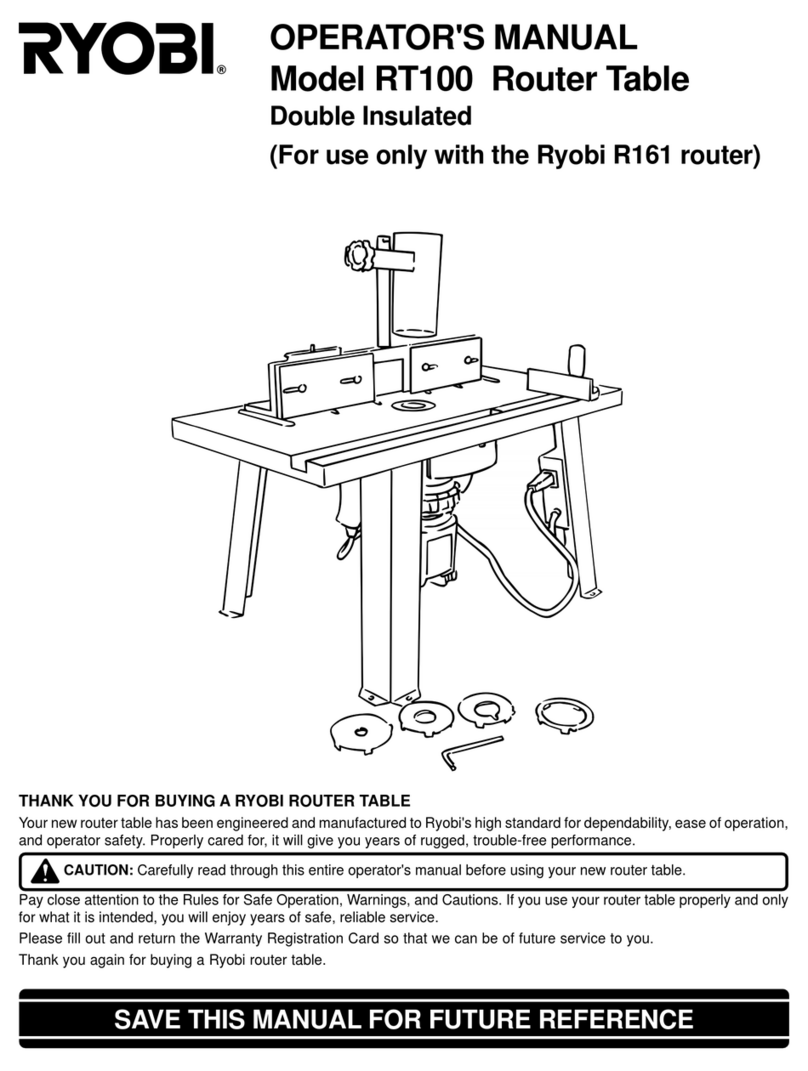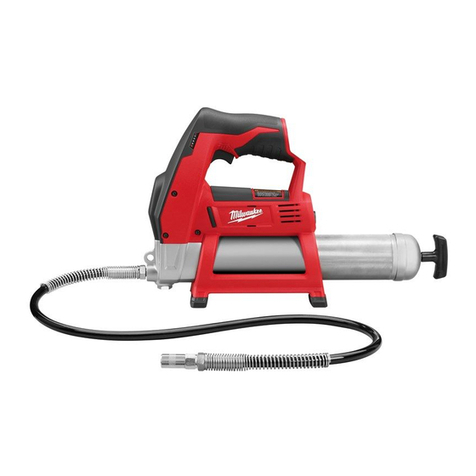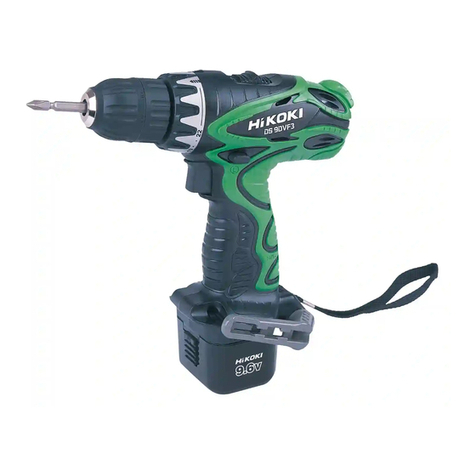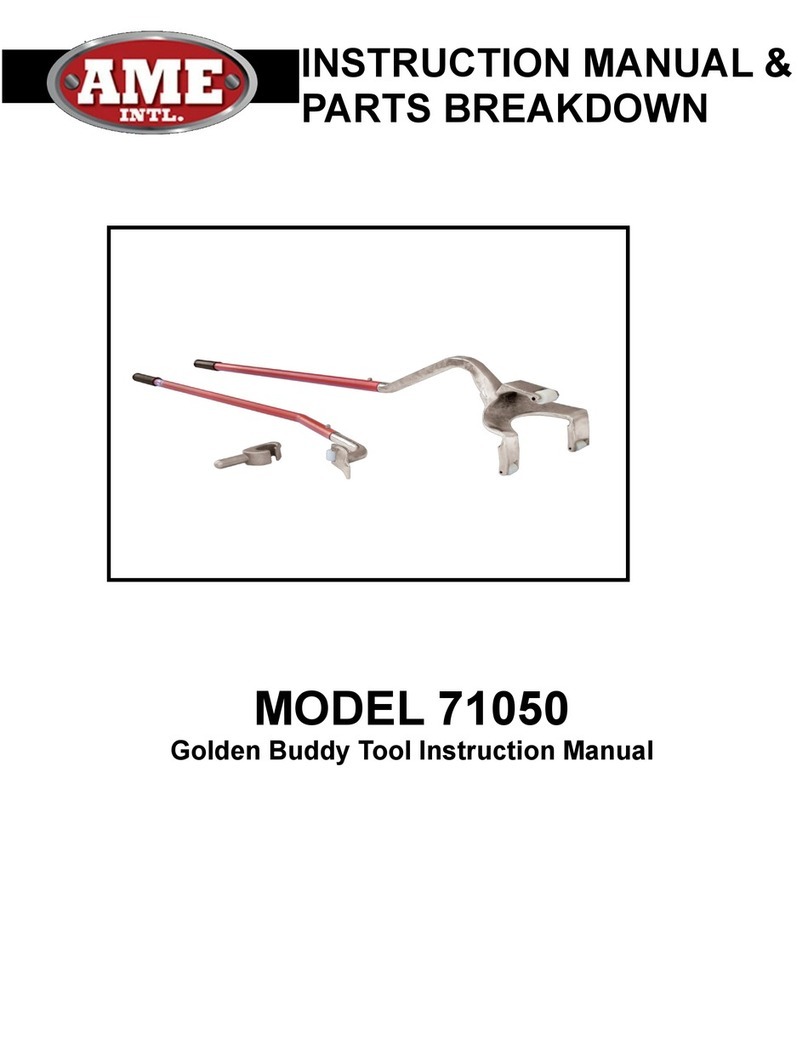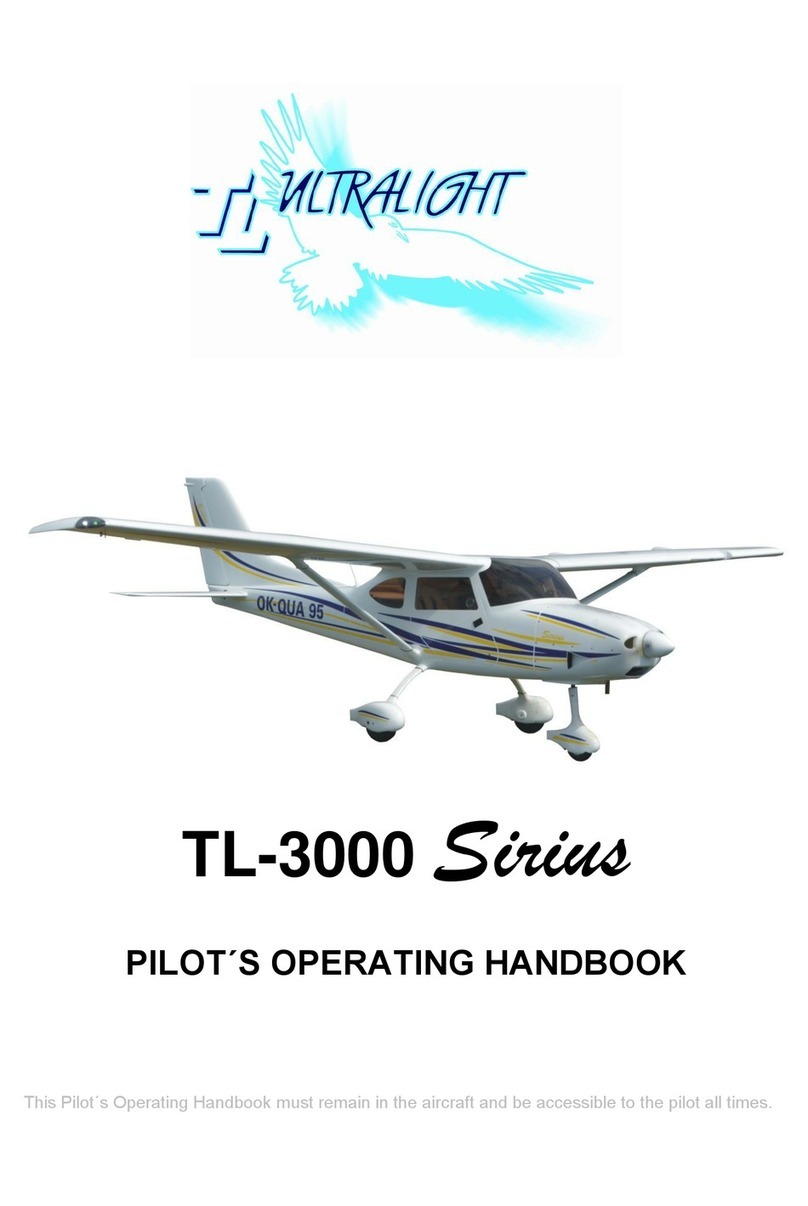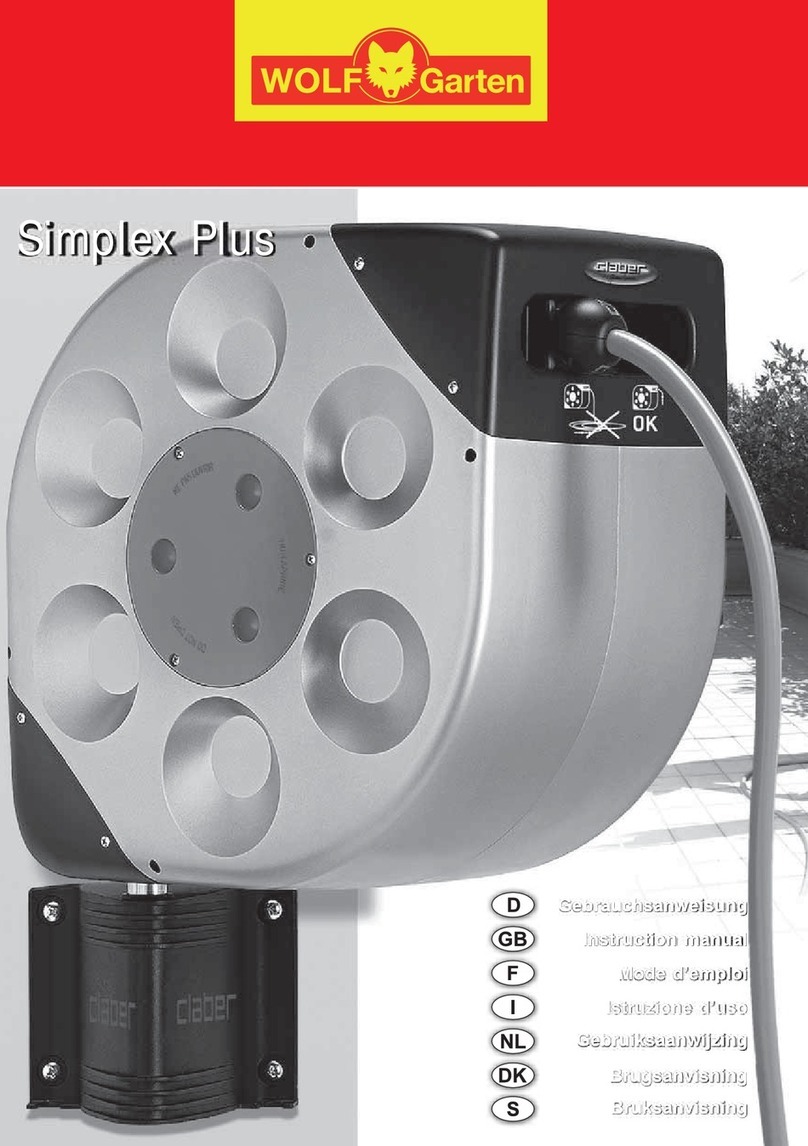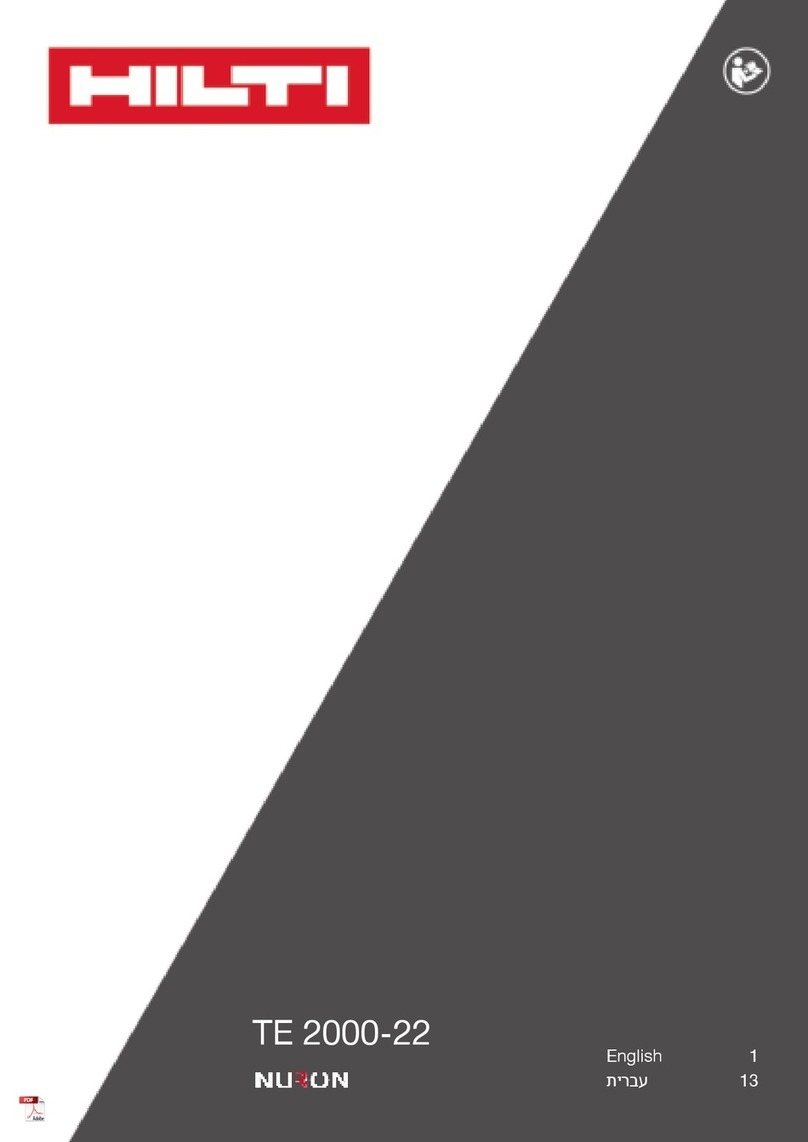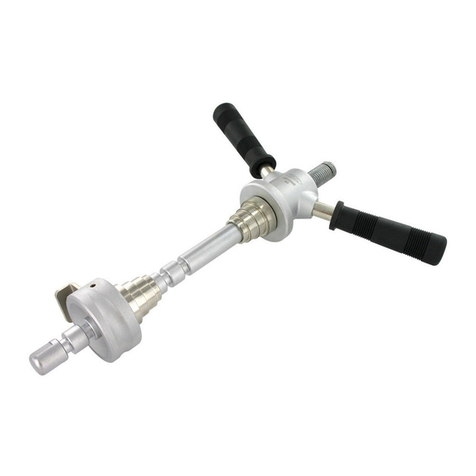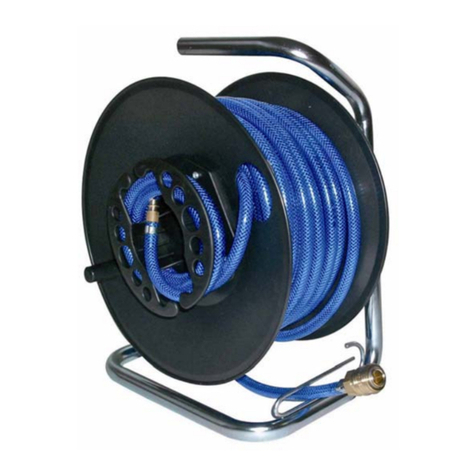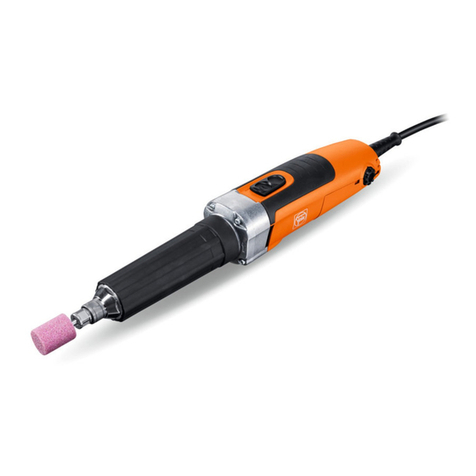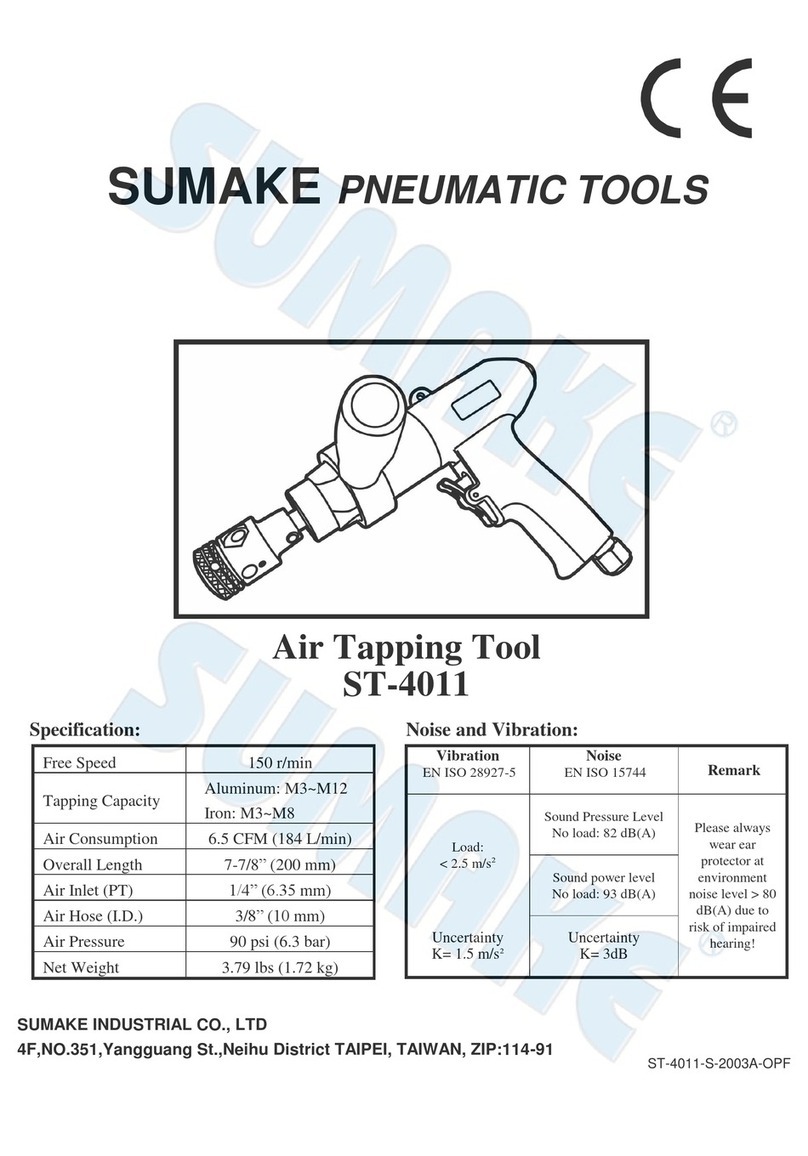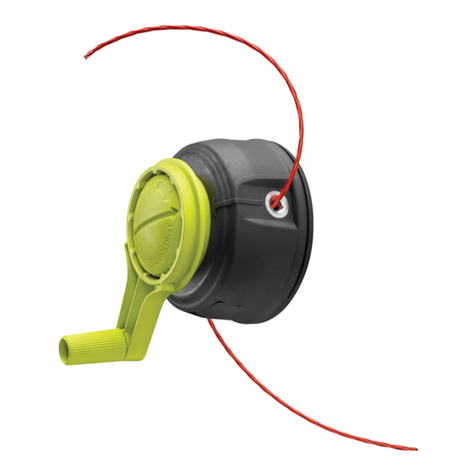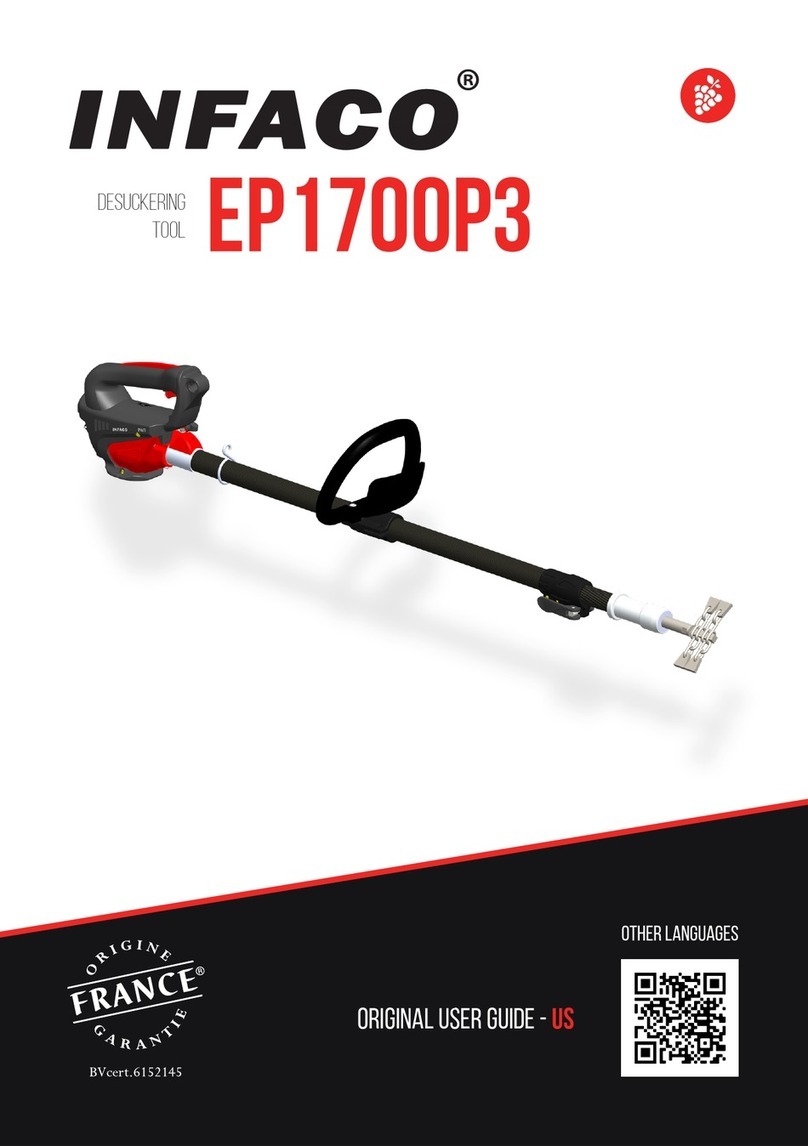Figure 2
3. CRIMPING PROCEDURE
Strip the wire to the length indicated, taking care not
to nick or cut the wire strands. Select an applicable
contact and identify the appropriate crimping
chamber according to the wire size (24-28) markings
on the tool.
Refer to Figure 2, and proceed as follows:
1. Hold the tool so that the front is facing you.
Squeeze tool handles together and allow
them to open fully.
2. Insert the contact (mating end first) into the
hole in the locator which corresponds with
the appropriate crimping chamber. Make
sure that the open “U” of the wire barrel and
insulation barrel face the stationary jaw.
CAUTION Make sure that both sides of the
contact insulation barrel are started
evenly into the crimping chamber.
Do NOT attempt to crimp an
improperly positioned contact.
3. Hold the contact in position, and squeeze
the tool handles together until ratchet
engages sufficiently to hold the contact in
position. Do NOT deform insulation barrel
or wire barrel.
4. Insert stripped wire into contact insulation
and wire barrels until wire and insulation are
visible in inspection window, as shown in
Figure 2.
5. Holding the wire in place, squeeze the tool
handles together until ratchet releases.
Allow tool handles to open and remove
crimped contact.
4. CRIMP PULL TEST
1. Refer to Section 3, CRIMPING
PROCEDURE, and crimp the contact
accordingly to achieve pull test in Figure 3.
WIRE SIZE TEST PULL
Max AWG lb.
28 4
26 6
24 8
Figure 3
5. CRIMP HEIGHTS
Figure 4
6. CRIMP ADJUSTMENT
1. See Manufacturers data sheet (GMT-DS)
supplied with hand tool.
7. DAILY MAINTENANCE
Properly crimped terminals are controlled by the
following maintenance and inspection
procedures.
1. Clean all dust, dirt, moisture and other
foreign matter from the crimp jaws that could
damage the crimp area of the dies.
DO NOT immerse tool in cleaning solution

